Sony Xperia Z3 Compact vs Sony Xperia Z1 Compact
Bigger screen in a phone just as compact: it's mobile alchemy
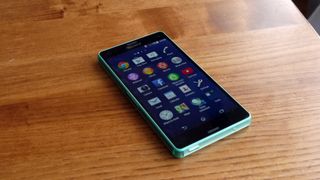
The Sony Xperia Z3 Compact is here, and while it may not attract quite as much attention as the top-end Sony Xperia Z3, it's actually a more interesting, unusual phone.
Like the Sony Xperia Z1 Compact, it gets you all the spec power of Sony's top-end giant, but in a smaller package. If you want a powerful phone that's not going to fill your palm and your pocket, you're looking in the right place.
But the real question is – how does the new Compact compare to the old one, announced just a year earlier? Their aims are identical, but their specs and screens aren't. In the new model you get a bit more power, a better camera and a significantly larger screen in a phone of the same size. What's not to like?
Design
In a very basic respect, there's not a great deal of difference between the Sony Xperia Z3 Compact and the older Xperia Z1 Compact. The new model is 0.3mm longer, precisely as wide and 0.9mm thinner.
Sounds pretty boring, doesn't it? Wrong. That they're so similar in size is hugely impressive, because the Sony Xperia Z3 Compact has a significantly larger screen than its predecessor.
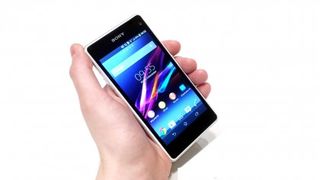
The bezels have been trimmed down, and the areas below and above the display put on a diet to make the Xperia Z3 Compact just as, well, compact as the last phone. It's a bit lighter too – although we'd challenge people to honestly notice a 10g difference between phones unless comparing directly.
Whether a result of this miniaturisation or a separate choice, the Sony Xperia Z3 Compact uses a nano SIM rather than a (now regular) micro SIM. So if you're actually upgrading from the Z1 Compact, you will need to get hold of a new SIM or get creative with a pair of scissors on your current one (not advised). Speaking from nerve-wracking experience, we recommend dropping your network a line.
Get daily insight, inspiration and deals in your inbox
Get the hottest deals available in your inbox plus news, reviews, opinion, analysis and more from the TechRadar team.
Both phones have a Gorilla Glass 3 front layer that covers the screen, but Sony has improved the rear design this time. Where the Xperia Z1 Compact uses flat front and back panels that appear to be glass, only the front actually is – the back is polished plastic.
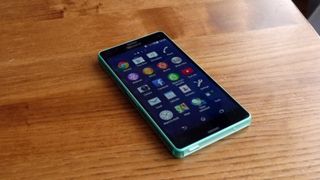
This time around, both sides are toughened glass, which should make the back a bit less prone to scratches. The sides of the Xperia Z3 Compact are plastic, though, with a translucent finish that has an eye-charming depth to it. Last time, Sony used aluminium for the sides in the last phone rather than plastic – which some might prefer – but the new model looks and feels like a winner.
There are – in our opinion – better colours on offer in the Xperia Z3 Compact too. Where the Z1 Compact comes in pink and yellow as well as the standard white/black, you can get the new model in green and orange/red. The colour models look great, perfectly showing off the translucent plastic sides.
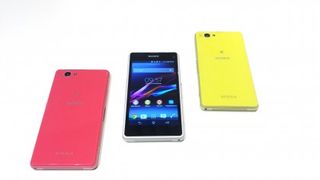
Both phones offer pretty comprehensive weather resistance, using socket-covering flaps to keep water out. The design of the actual flaps has been improved, though, in order to make them a bit more resilient. We'd heard numerous reports of Xperia phone flaps failing, so that can only be a good thing.
The IP certification of the Xperia Z3 Compact has been slightly upgraded over the Z1 Compact too. This time around you get IP65 and IP68 instead of IP55 and IP58.
It's easy to get lost in these certifications, so we'll make it simple: both phones can be submerged in water of at least 1.5m for at least 30 minutes, but where the Xperia Z1 Compact is merely "dust proof", the Z3 Compact is "dust tight". For most people the difference is fairly meaningless. But it's a good one to show off if you want to bore your friends.
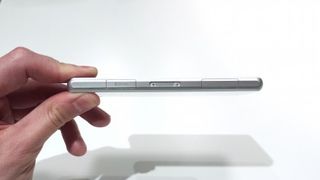
Yep, it's not that exciting an upgrade, but we still love being able to take the phone into the bath without worrying.
Screen
As already detailed, one of the most impressive things about the Sony Xperia Z3 Compact is that it fits a much larger screen into the same size frame. The Sony Xperia Z1 Compact has a 4.3-inch display, the Z3 Compact a 4.6-inch one.
When you look at how small the Z3 Compact is, and think its display is only 0.1 inches smaller than the lovely-but-much-larger HTC One, you have to give some design props to Sony.

A larger screen will be better for games, better for browsing – better for everything, really.
However, there is a downside to this change, Sony has not upped the resolution. It's 720p but at the price there are plenty of 1080p phones to choose from, it's a tough compromise to swallow.
Get up close and personal, eyeball-to-pixel and you will be able to tell the difference. But let's not get too upset. Even with the larger-screen Z3 Compact you get a display of 319ppi, which is just a shade below the 326ppi "Retina" resolution of the iPhone 5S.
It could be better, but it's certainly not bad.
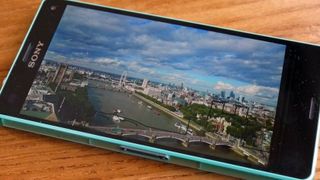
Both phones get to wear Sony's Triluminous and X-reality branding. These are technologies born in Sony's TV department. You get great image quality, very nice vivid colours and very good contrast for an LCD display.
Despite all the fancy-sounding technologies in these phones, both the Xperia Z1 Compact and Z3 Compact use IPS LCD screens at heart.
Camera
Look at the core camera specs of these two phones and it seems like Sony hasn't made any significant upgrades. Both phones have 20.7MP main sensors that are 1/2.3 inches a piece. That's very large for a phone, and is the standard size for decent compact cameras.
However, where the Sony Xperia Z1 Compact shares its camera hardware with the Xperia Z1, the Xperia Z3 Compact has the same camera setup as – you guessed it – the Xperia Z3.
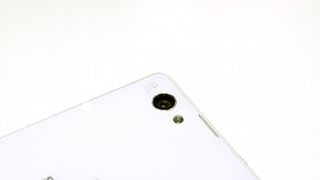
There are a few important differences. The maximum ISO sensitivity setting has been bumped up from 6400 to 12800, making the Xperia Z3 Compact even more capable in low-light conditions.
ISO 12800 photos are usually quite noisy even if you use a DSLR, but Sony is a pro at using extreme noise reduction techniques in its top phones to make even super-low-light photos quite clean-looking. Often unnaturally so, in fact.
For very low light conditions, the Xperia Z3 Compact camera will be a little bit better than the last model.
The lens has changed too. Where the Xperia Z1 Compact has a lens with an equivalent focal length of 27mm, the Z3 Compact goes a bit wider with a 25mm 'G' Lens. Field of view is a question of personal preference, but we're also hoping the new phone's lens may be faster too, with a wider aperture. We're looking for clarification on this spec at present. That said, the Z1 Compact is no slouch with a f2.0 lens.

In good lighting, you can expect to get similar sorts of short between the two models. But as conditions get a bit trickier you'll get better results from the Sony Xperia Z3 Compact. As most high-end phones can produce good photos in good lighting, this is a result.
There's a minor upgrade to the front camera, from 2MP to 2.2MP, but neither is on the level of the up-to-5-megapixel front cameras we see in phones like the HTC One M8.
Andrew is a freelance journalist and has been writing and editing for some of the UK's top tech and lifestyle publications including TrustedReviews, Stuff, T3, TechRadar, Lifehacker and others.
Most Popular

